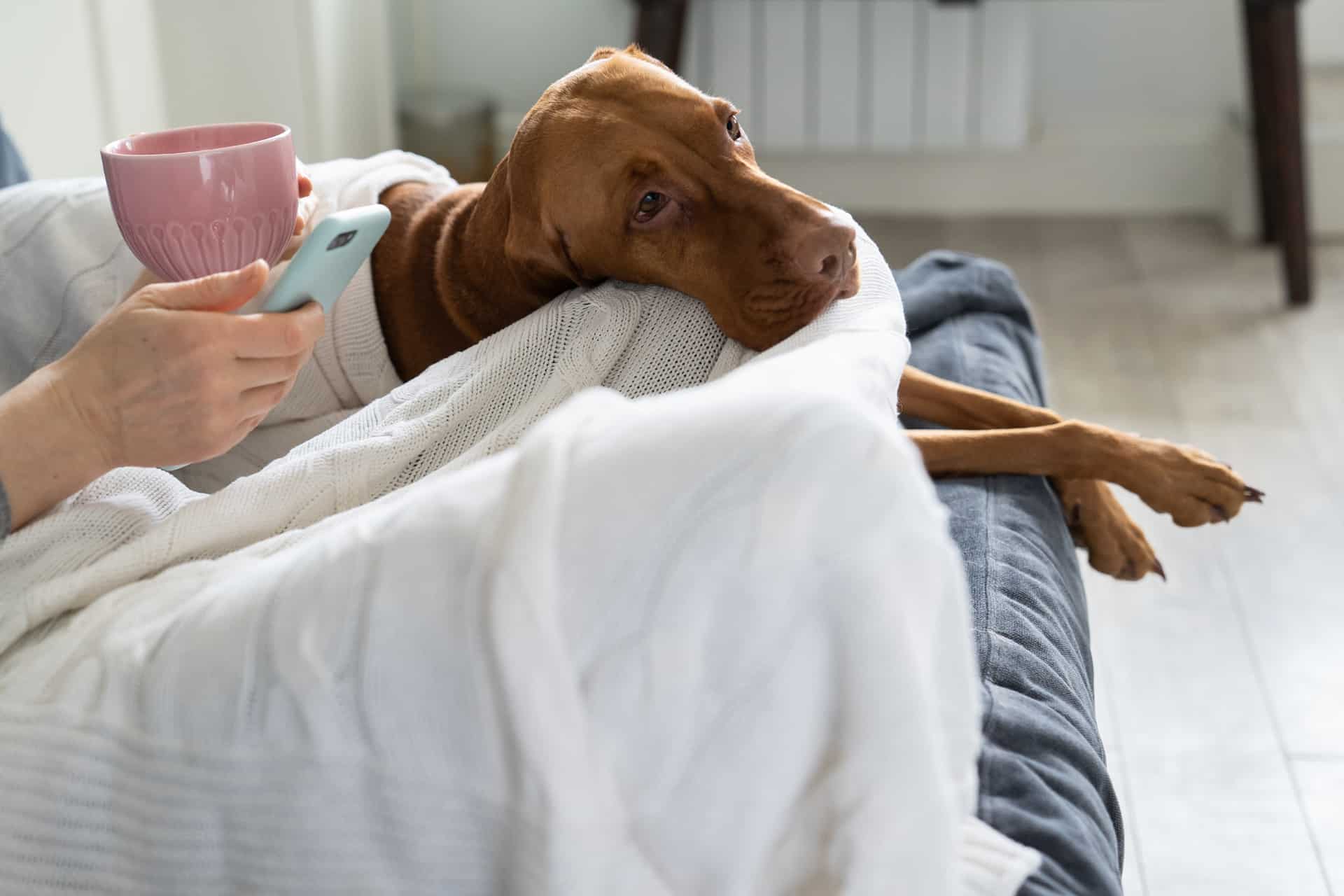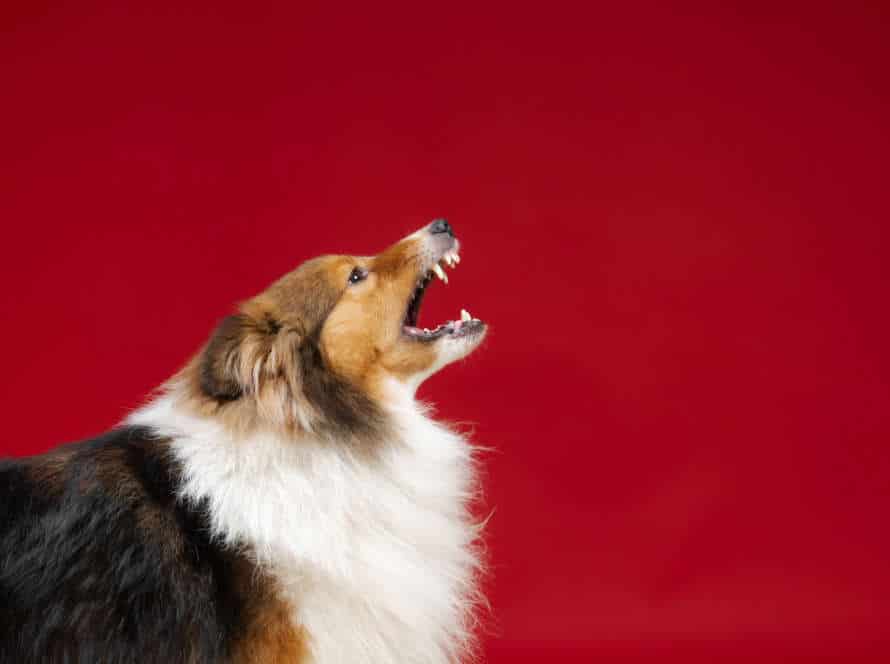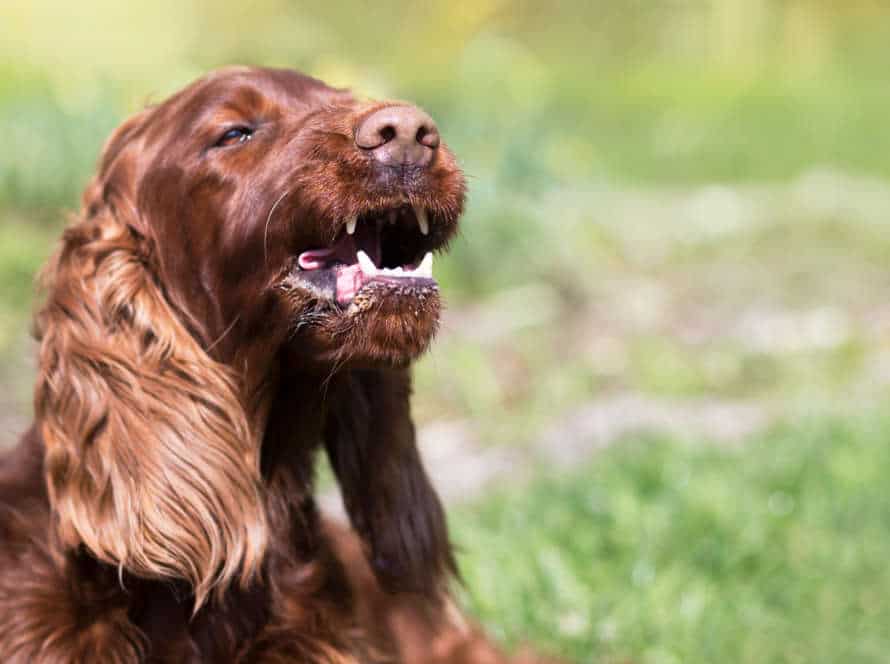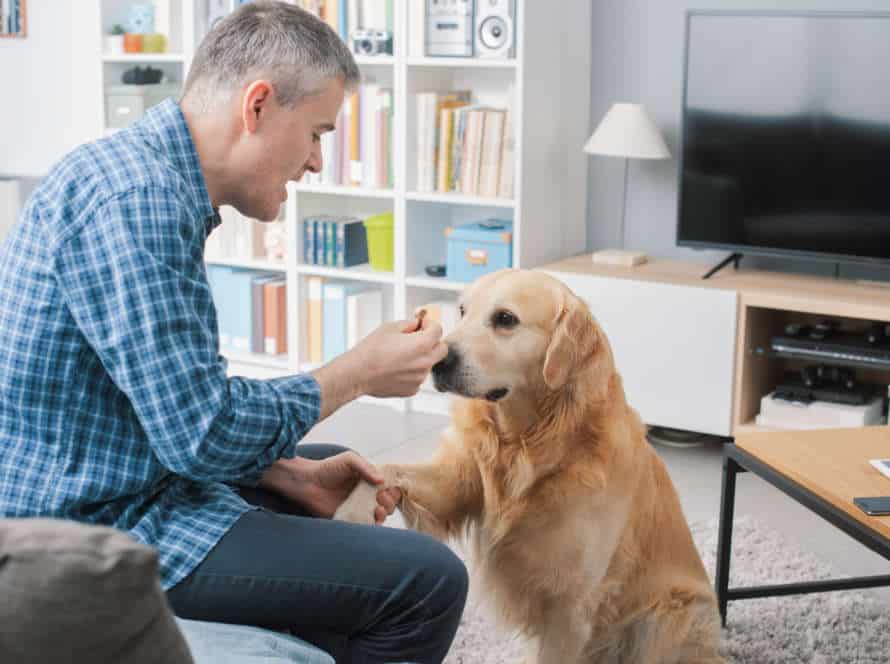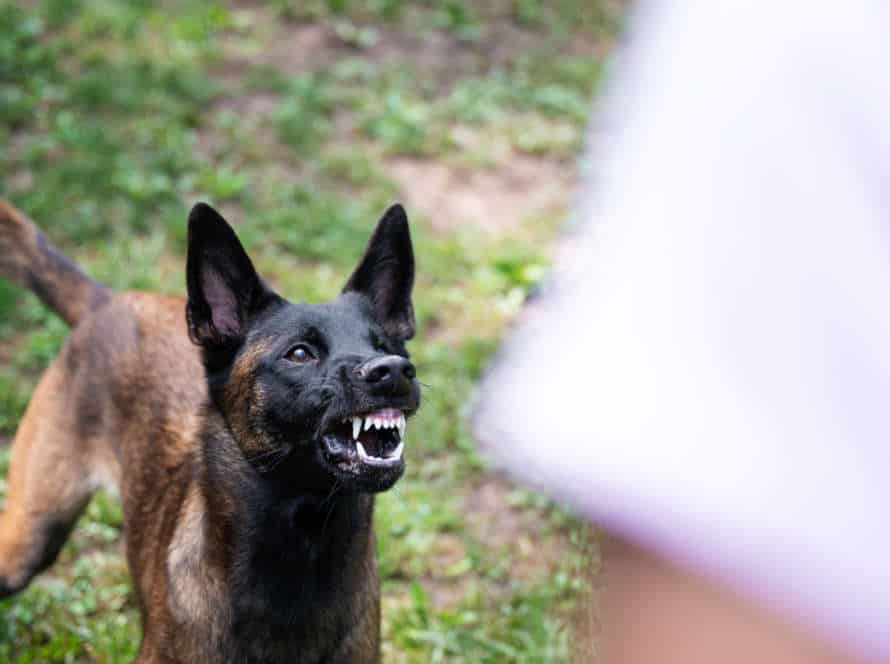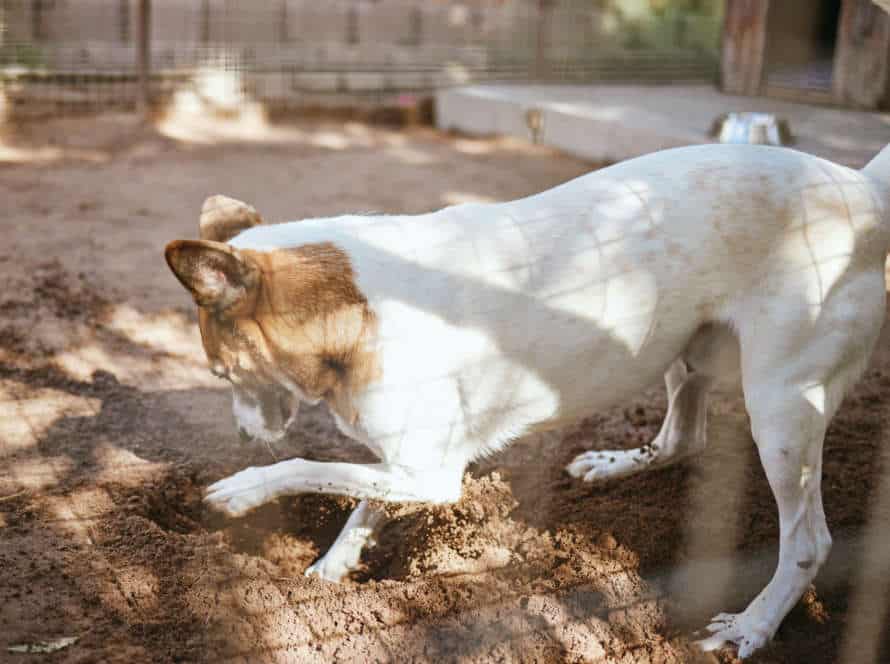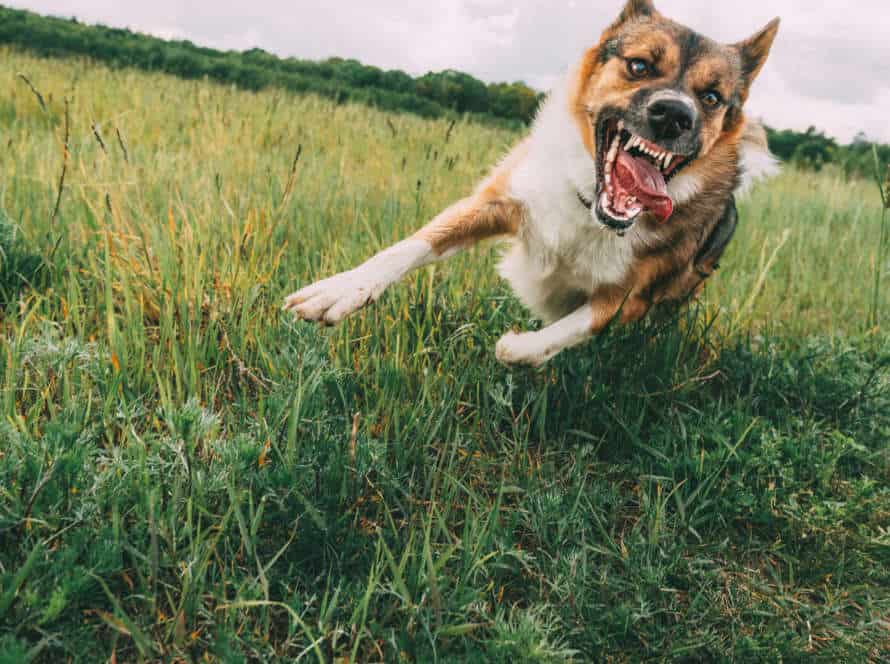Understanding Dog Separation Anxiety
When you’re away from home for a long time, it can take a toll on your pet. Dogs, especially, may have separation anxiety. This can cause them to act differently while you’re gone. Knowing what separation anxiety is, how it affects your pup, and how to manage it are essential steps in helping your pup adjust to your work schedule. Let’s look closer into this.
Identifying signs of separation anxiety
Dogs may experience anxiety when their owner returns to work after being home for a while. Here’s how to tell if your pup is anxious:
- Barking/Howling
- Accidents in the house
- Chewing/Scratching furniture, doors, or windows
- Trying to escape from a crate/room
- Following you around or being extra clingy
If you think your dog’s feeling anxious, here’s what to do:
- Increase the time away from home before going back to work.
- Create a comfortable, safe place like a crate or a room with toys for your pup.
- Provide exercise and mental stimulation before leaving.
This will help your dog stay calm & relaxed when you’re gone.
Understanding why some dogs may experience separation anxiety
Separation anxiety in dogs is an issue. It occurs when they are left alone and become anxious. There are a few causes. Isolation for too long, a shift in routine, or a change in the environment can trigger it. Poor socialization, not enough stimulation, and bad past experiences can also lead to it. Knowing the signs is important. Destructive behavior, excessive barking, and indoor peeing and pooping are common. To help, gradually increase time away, give them toys and treats, and get help from a vet or dog trainer.
The importance of addressing separation anxiety
As pet owners go back to work after working remotely, it is important to address separation anxiety in dogs. This can show in several ways, such as:
- Destructive behaviors
- Whining/barking
- Self-harm
To help dogs adjust to being alone during the day, try:
- Desensitizing gradually – Start by leaving your pet alone for a few minutes and then increase the time.
- Positive reinforcement – Provide interactive toys, puzzles, or treats for them to focus on.
- Physical stimulation – Before you leave, take your dog for a walk, run, or play.
- Professional help – For serious cases, consult a vet or behaviorist for personalized treatment.
Preparing for Your Return to Work
Going back to work? It can be hard on both you and your pup. Make it easier on the both of you by preparing in advance. Here are some tips and tricks to help make the transition successful.
- Get ready for changes in lifestyle and routine when you go back to work.
- It’s important for your pup’s wellbeing.
Gradually adjusting your dog to alone time
It’s key to adjust your pup to solitary time before you go back to work. Here are some tips:
- Start by being away for 10-15 minutes.
- Slowly increase the time over a few weeks.
- Give your dog toys, snacks and activities to keep them busy.
- Create a pleasant and secure spot for them, like a kennel or a special room.
- Maybe get a dog walker or pet sitter to look in on them during the day.
By slowly getting them used to you being gone, they’ll be less anxious and stressed when you’re back at work. Pro tip: Give treats, compliments and love when they do well on their own.
Providing alone time toys and activities for your dog
Want your pup to feel comfy when you’re back at work? Give them solo-time toys and activities! Here are some tips:
- Puzzle toys: Fill with treats and food – your pup will love it!
- Chewing toys: Help reduce stress and anxiety.
- Interactive toys: Move, make noise, or dispense treats – they’ll be entertained!
- Kong toys: A classic, stuff with peanut butter, cheese, or other pup-approved fillings.
- Create a cozy space: Water, toys, and a comfy bed.
Pro-tip: Introduce the toys slowly, so you don’t overwhelm your pup.
Creating a comfortable and secure space for your dog while alone
Creating a great space for your pooch while they’re solo is a must! Here are some tips:
- Pick a calm area of your home away from noise and distractions, like the front door or windows.
- Give them comfy bedding, water, and toys for entertainment.
- Try crate training for a cozy, familiar spot.
- Set up a routine and stick to it to make them feel safe.
- Before you go, give them plenty of exercise and love.
Pro tip: Gradually increase the amount of time they spend alone, to help them get used to your work schedule.
Establishing a Routine for Your Dog
Creating a routine is key to helping your pup adjust to your work-life. Routines bring structure and can keep them calmer while you’re out. Provide exercise, mental stimulation, and companionship when you are home – that way your dog will look forward to your time together. You can also give them activities to do while you’re away. Let’s discuss the various ways to set up a routine for your pup.
Creating a consistent schedule for feeding and bathroom breaks
Creating a routine for your pup’s feed and bathroom breaks can help them adjust to you going back to work. Here are some tips:
- Feeding: Feed your dog at the same time every day. Couldn’t come home on lunch? Invest in an automatic feeder.
- Bathroom Breaks: Take them out for a walk or let them out regularly throughout the day. Can’t make it home? Hire a dog walker.
Consistency is key. Stick to the schedule, even on weekends.
Pro tip: Leave them a puzzle toy like a Kong filled with peanut butter. This can help with boredom and give mental stimulation while you’re away.
Structuring playtime and exercise around your work schedule
Dogs require routine and structure. Setting playtime and exercise around your work timetable can help your pup adjust to you going back to work. Here are some tips to give your dog structure:
- Make a plan: Decide exact times of day for feeding, walking, playing, and sleeping.
- Have a 30-min morning walk to start the day and get ready for when you are at work.
- Give interactive toys, like a puzzle or treat dispenser, to keep your dog entertained during your absence.
- Stay consistent with the plan to make your pup feel safe and relaxed.
- Be flexible and adjust the schedule if needed.
- Pro tip: If you have difficulties finding time to exercise your pup, consider getting a dog walker or dog daycare.
The importance of sticking to a routine for your dog’s mental health
For your pup’s mental health, making and following a routine is key, especially now that we’re adjusting to a new normal. Having a routine gives your dog a sense of predictability and safety, which decreases stress and anxiety.
These tips can help you create and stick to a routine for your pup:
- Feed them at the same time each day.
- Regular bathroom breaks and walks.
- Keep playtime and exercise consistent.
- Increase the amount of time your pup spends alone gradually, so they can adjust to you going back to work.
By following a routine, your pup will get used to changes in their environment and stay healthy and happy.
Seeking Additional Support
Heading back to work after a break? Your pup may find it tough to adjust. To make it easier, try transitioning them slowly. But, it could still be hard. Get more help! Professional training, pet sitting and family/friends can all help. Let’s explore your options!
Consulting with a veterinarian or animal behaviorist
Consulting with a vet or animal behaviorist is a great option to help your pup adjust to you going back to work post-pandemic. Here’s why:
- Vets can check if any medical conditions are causing the problem.
- Animal behaviorists can give special training to help with separation anxiety or other issues.
- They suggest gradually increasing separation time, positive reinforcement and making sure your pup has lots of exercise and mental stimulation when you’re away.
Getting extra help from a vet or behaviorist can help your pup adjust and make sure they’re happy and healthy.
Joining a support group for dog owners experiencing separation anxiety
If you’re having trouble with your pup and separation anxiety, joining a support group for dog owners can be helpful. Here’s how:
- Share stories, learn from others who’ve been through it.
- Get advice from owners and trainers about making the transition smoother for your dog.
- Vent frustrations and emotions in a safe space.
- Gain access to professional resources and referrals, like trainers or behaviorists.
Remember, seeking support is a sign of strength. Don’t hesitate to reach out if you need help with separation anxiety.
Considering a dog walker or doggy daycare for additional socialization and stimulation
Heading back to work after an extended stay at home? Worried about leaving your pup alone? A dog walker or doggy daycare can help.
A dog walker can take your pup on walks and offer other services, like feeding and playtime.
Daycare facilities provide supervised playtime, exercise, socialization, even grooming and training! Before choosing, do your research. Check references and arrange a meet and greet. With the right support, your pup will be happy and taken care of while you’re away.
Monitoring and Adjusting Your Approach
Your pup’s been with you all the time these past months. As you head back to work, make sure your doggo adjusts. The best way is to observe their reactions and adjust accordingly. This article will discuss strategies to monitor and adjust, helping your pup cope with your return.
Keeping track of your dog’s behavior while alone
Keeping tabs on your pup’s actions while you are away can be tricky, but it is a must to ensure they adjust well when you return to work. Knowing their behavior while you are not around can make a big difference in how they cope with changes in the day-to-day. Here are a few ideas to monitor and adjust:
- Create a log of your pup’s behavior when you are gone. Note any destruction, anxiety, or aggression.
- A dog walker or pet sitter can help reduce worries or boredom during the day.
- Speak with an experienced animal behaviorist or dog trainer about behavior modification training.
- Give your furry mate plenty of stimulation when you are not home, to prevent boredom.
- Gradually increase the time you are away from home to help them get used to a routine.
Pro-tip: Dogs are social animals, and need routine. Keeping an eye on their behavior and changing things accordingly can help them adjust to lifestyle changes easily.
Making adjustments to your routine or approach as needed
It’s essential to monitor and adjust for your pup to get used to you going back to work. Here are some tips:
- Gradual change: Begin by gradually increasing the time you’re away from home, so your pup has time to adjust.
- New routine: Make a new plan for your pup, with exercise, playtime, and meals. This will help them to understand what to expect and feel less nervous when you’re not at home.
- Special treats or toys: Offer special treats or toys to keep your pup entertained and content while you’re away.
- Check-in: Think of getting a dog walker or asking a trusted neighbor to stop by your pup during the day.
- Pay attention: Notice your pup’s behavior and alter your approach as needed to help them feel relaxed and secure while you’re absent.
By following these tips, you can make changes to your plan or approach as required to assist your pup to adjust to you going back to work. Don’t overload your furry friend and be patient while they become used to the change.
Celebrating progress, no matter how small.
Returning to work after a long break? Monitor your approach and help your furry friend adjust. Celebrate even small progress! Observe their behavior when you aren’t home. Signs of stress? Chewing furniture or barking? Gradually increase time away, starting with minutes. Make changes to routine or environment. Provide toys or more play sessions. Reach out to a trainer or behaviorist. Even small improvements worth celebrating. Reward with praise, treats, or extra playtime. A happy, healthy dog is the best job reassurance.
Frequently Asked Questions
1. How long does it take for a dog to adjust to their owner returning to work?
It varies from dog to dog, but generally it takes a few weeks for them to get used to the routine.
2. What are some signs that my dog is not adjusting well to my return to work?
Signs include excessive barking or howling, destructive behavior, and separation anxiety.
3. What can I do to help my dog adjust to my return to work?
Gradually introduce them to their new routine, provide plenty of mental and physical stimulation, and make sure they have a safe and comfortable space to be in while you’re away.
4. Should I hire a dog walker or daycare for my dog while I’m at work?
It depends on your dog’s needs and schedule. Some dogs may benefit from a midday walk or playtime, while others may be comfortable staying at home alone.
5. Will leaving the TV on or leaving a toy out help my dog feel less lonely while I’m at work?
It may provide some comfort, but it’s not a guarantee. It’s better to focus on creating a routine and providing mental and physical stimulation for your dog.
6. Can I leave my dog alone for an entire workday?
It’s generally not recommended to leave a dog alone for more than 8 hours. If you’re going to be away longer than that, consider hiring a pet sitter, dog walker, or taking your dog to daycare.

